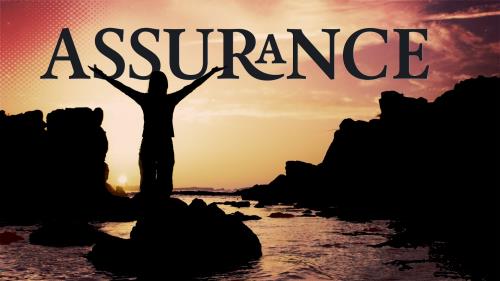-
Noah's Ark--A Glimpse Of The Coming Savior Series
Contributed by Bobby Mcdaniel on Nov 28, 2017 (message contributor)
Summary: Part 1 of a series on Old Testament parallels of New Testament salvation. This message compares how Noah’s Ark parallels the saving works of Christ.
Old Testament Parallels of New Testament Salvation — Part 1
Noah’s Ark—A Glimpse of the Coming Savior
Scripture Ref: Genesis 6:5-8, 13-14, 16,19; 7:16, 23-24 Luke 1:26-35
Galatians 5:19-21 Romans 9:22-25
2 Peter 3:3-15 Leviticus 17:11
John 5:24; 14:6; 10:7, 9 Matthew 25:10-12
Hebrews 9:12-14; 11:7
Other Ref: All the Messianic Prophecies of the Bible, Lockyer
The Bible Knowledge Commentary
1. Introduction
a. As Christians, we believe the OT to be just as credible and applicable as those of the Jewish faith did prior to the coming of Christ.
b. As Christians, we also believe the OT, in its entirety, points to Christ; but what is belief or faith without foundation? If asked, could you give specific examples with Biblical proof?
(1) There are the obvious Messianic prophecies, such as Micah, Daniel, Jeremiah, etc.
(2) There are some, however, that are not so obvious. They give, what Herbert Lockyer, in his book entitled All the Messianic Prophecies of the Bible, “prophetic gleams from historical events.”
c. This is the first message in a series of messages that will examine some of those OT events that give us a glimpse of the Messiah and His redemptive work.
d. Today we will focus on Noah’s Ark.
e. Read:
Residents along the Mississippi River are no strangers to overflows and flooding during the spring thaw and rains. Since the early 18th century, settlers have built levees and floodwalls along the 2,000-mile-long waterway to try and control it. However, in years with record-breaking rainfall, like 1927 and 1993, trying to tame the river becomes impossible.
The Mississippi and its swollen tributaries reached peak levels in April of 1927 and overflowed their banks. One by one, levees built to contain the river broke, and a wall of water pushed its way across midwestern farmlands. The flood covered 27,000 square miles, an area about the size of Massachusetts, Connecticut, New Hampshire, and Vermont combined. For two long months the water would remain above flood stage, leaving hundreds of thousands of people displaced from their homes.
The flood of 1993 was one of the most devastating floods in United States history. More than double the normal amount of rainfall fell in the Midwest during the first half of the year, flooding over 16,000 square miles in nine states. Major flooding was confined to the Upper Mississippi due to the less than average level of inflow from Lower Mississippi tributaries.
f. Despite the severity of those floods, they pale in comparison to the flood Noah and his family experienced.
g. Genesis tells us this about the great flood. Counting 30 days to a month, the Flood lasted 371 days.
h. Although today’s message is neither specifically about the flood, nor about Noah, it is about the prophetic implications of both the flood and the ark Noah built.
i. There are many parallels in Noah’s story to that of Christ. Today we will examine them.
2. The Need for Salvation
a. OT—Evil and wickedness were running rampant.
(1) Read Genesis 6:5-8
(2) From man’s fall from grace in the Garden of Evil to the time of the great flood, he continued to grow in wickedness and evil.
(3) Because of this, God decided to “wipe mankind from the face of the earth.”
b. NT—Evil and wickedness still runs rampant.
(1) Read Galatians 5:19-21
(a) Why would Paul write this to the church at Galatia if such sins did not abound?
(b) Is it any different today?
(2) Read 2 Peter 3:3-11 —Just as Noah needed salvation from the flood, we need salvation from destruction by fire.
3. God’s Plan, God’s Specification
a. OT—God used the obvious choice for his vessel of salvation.
(1) Read Genesis 6:13-14
(a) God specified that Noah make the ark of cypress (gopher wood), the perfect choice of wood for making a boat.
(b) Cypress is strong, durable and resistant to exposure to the elements.
b. NT—Again God used the obvious choice for his vessel of salvation.
(1) Read Roman 3:22-25—Christ was the perfect choice as the author of our salvation.
(a) He was the Son of God.
(b) He was blameless and without sin.
(c) He had the power to forgive sin.
4. The Purpose of the Vessel
a. OT—A physical salvation.
(1) Read Genesis 6:19
(2) The express purpose of the ark was preservation of life.
(3) It was a place of safety and refuge.
(4) This was a physical salvation, not a spiritual one.
b. NT—A spiritual salvation.
(1) Christ, just like the ark, provides deliverance from sin and deliverance from judgment.
(2) Read John 5:24—I tell you the truth, whoever hears my word and believes him who sent me has eternal life and will not be condemned; he has crossed over from death to life.
c. The ark was a “type of Christ,” a refuge from present sin and coming judgment.

 Sermon Central
Sermon Central



